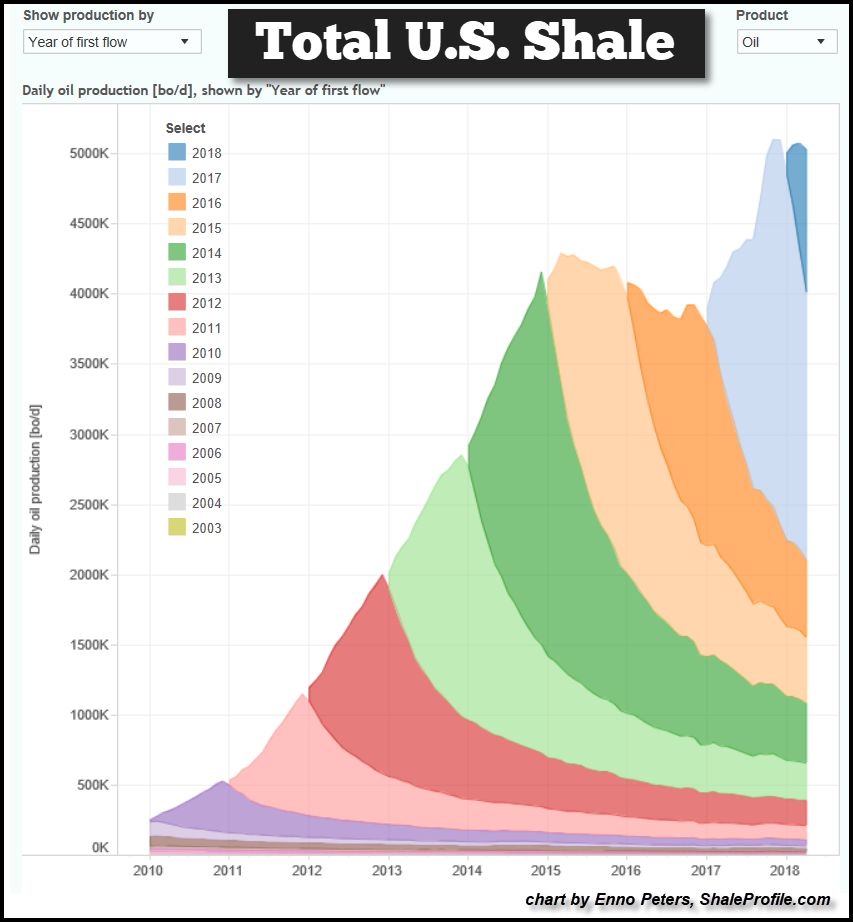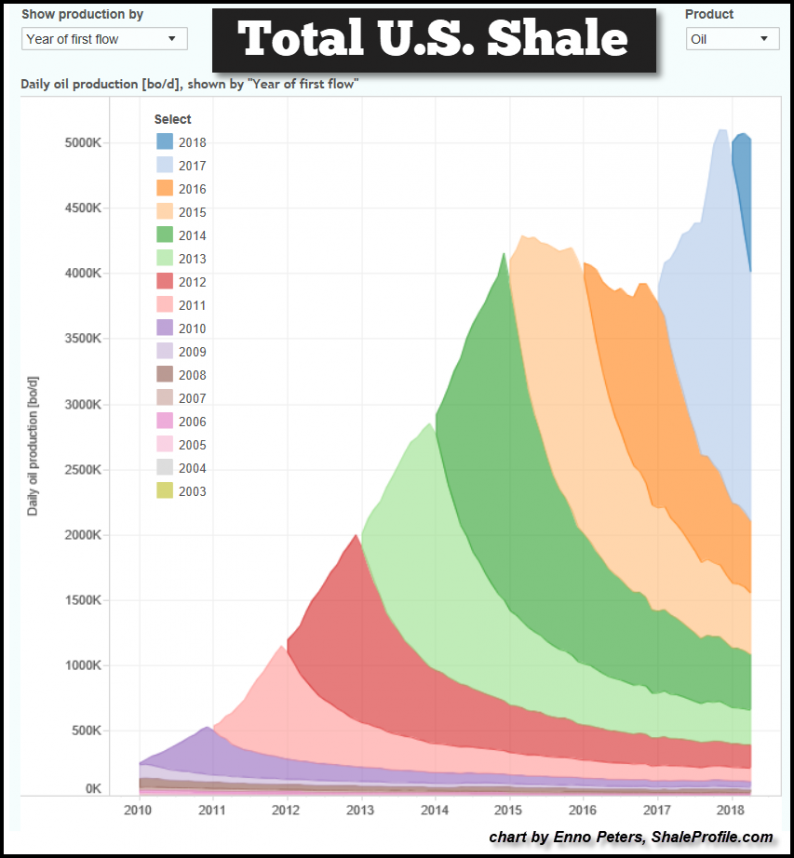The death of U.S. Energy Independence will occur when the collapse of shale oil production begins. And when U.S. shale oil production finally peaks and declines, it could fall much more rapidly than we realize. The rate at which U.S. shale oil production declines in the future is based on two key factors, remaining reserves, and the oil price.
Before I get into the remaining shale oil reserves, let’s first consider the price. When the oil price collapsed from mid-2014 to a low at the beginning of 2016, frackers cut drilling considerably. From March 2015 to September 2016, total U.S. shale oil production fell approximately 600,000 barrels per day (info Shaleprofile.com). However, this decline was not due to the peak in production, but rather, because the low oil price made drilling shale oil uneconomical.
What happens when U.S. shale oil production finally peaks along with much lower oil prices? Well, that will be the PERFECT STORM for the U.S. shale oil industry. As I have mentioned in several articles and videos, when the current economic market cycle of 9-years finally rolls over, we are going to have one heck of a market correction. When the broader markets crack lower in a big way, they will most certainly pull down the oil price along with it.
To get an idea of the total U.S. shale oil production, here is a chart from Enno Peters at ShaleProfile.com:

This chart shows U.S. shale oil production as of April this year. Total U.S. shale oil production is shown to be a little bit more than 5 million barrels per day. Each color in the chart represents a year’s worth of oil production. What is interesting about the chart above, is the huge decline rate of domestic shale oil production. And as each year passes, the degree of decline steepens.
Now, to get an idea of how U.S. shale oil production will decline in the future, I have included a series of charts by Jean Laherrere. You can check out the entire document by Laherrere and Hall at Forecast For U.S. Oil & Gas Production. Jean takes the past production profile and bases future production on remaining oil reserves using a Hubbert Linearization formula. For example, the North Dakota Bakken shale oil production will fall back to a little more than 100,000 barrels per day by 2025, based on a total of 4 billion barrels of total reserves:













Leave A Comment